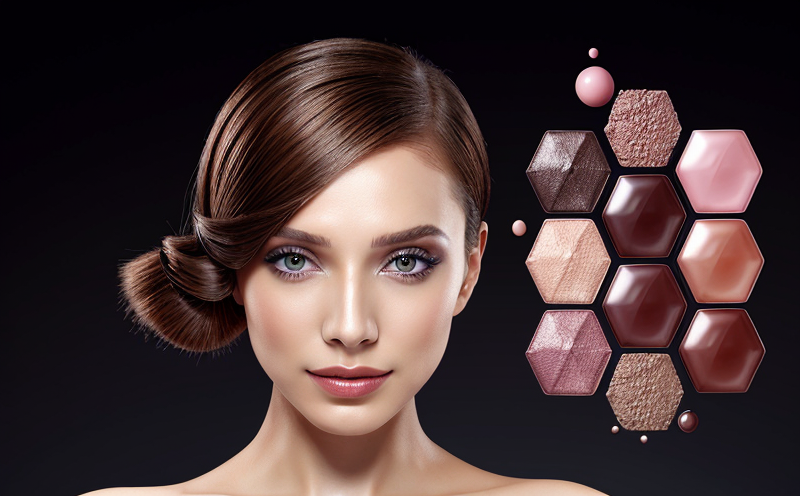Gold Nanoparticle Testing in Anti-Aging Cosmetic Products
The use of gold nanoparticles (AuNPs) in anti-aging cosmetic products is a burgeoning trend driven by their unique optical, chemical, and biological properties. These tiny particles can enhance the efficacy of skincare formulations through improved penetration, enhanced stability, and targeted delivery systems. As gold nanoparticles continue to gain prominence, ensuring product safety and efficacy has become paramount for manufacturers. This section delves into the testing methodologies employed in assessing the characteristics and potential risks associated with gold nanoparticle inclusion in cosmetic products.
Gold nanoparticles are synthesized through various methods such as reduction of gold salts by reductants like citrate or thiol compounds. These particles exhibit a wide range of sizes, shapes, and surface coatings depending on the synthesis conditions. In anti-aging cosmetics, these nanomaterials can be used to provide sun protection, enhance skin hydration, and improve overall skin appearance.
Testing gold nanoparticles involves several critical steps. The first step is particle size analysis using techniques like Transmission Electron Microscopy (TEM) or Dynamic Light Scattering (DLS). Particle size distribution significantly influences the interaction between the nanoparticles and biological systems. Next comes zeta potential measurement, which assesses the stability of the nanoparticle dispersion in cosmetic formulations.
Another crucial aspect is the evaluation of oxidative stress effects using various assays such as the DPPH radical scavenging capacity test or FRAP (Ferric Reducing Ability of Plasma) assay. These tests help determine whether the gold nanoparticles possess antioxidant properties, which are key for their anti-aging application.
Furthermore, cytotoxicity testing is essential to ensure that these nanomaterials do not pose adverse effects on human health. This involves in vitro tests using cell lines such as human keratinocytes or fibroblasts. Additionally, acute toxicity studies may be conducted if required by regulatory bodies.
The stability of gold nanoparticles under different environmental conditions is also a critical factor. This includes assessing their behavior when exposed to various solvents commonly used in cosmetic formulations like ethanol, water-alcohol mixtures, or oils.
Once all these tests are completed, comprehensive reports detailing the findings are generated. These documents provide detailed insights into the physical and chemical properties of gold nanoparticles as well as their potential impacts on human health and the environment. They serve as valuable tools for developers to refine their formulations further based on scientific evidence rather than guesswork.
In summary, rigorous testing ensures that gold nanoparticles used in anti-aging cosmetic products meet stringent quality standards set forth by regulatory agencies worldwide. By adhering to these protocols, manufacturers can produce safer and more effective products while maintaining high levels of customer satisfaction.
Benefits
The benefits derived from thorough testing of gold nanoparticles in anti-aging cosmetic products are multifaceted. Firstly, it enhances product safety by identifying any potential hazards early on in the development process. Secondly, it ensures that only high-quality materials are incorporated into final formulations, thereby improving overall product performance and longevity.
Moreover, such rigorous testing helps maintain compliance with international standards like ISO 10993-4, which governs biocompatibility evaluation of medical devices containing nanomaterials. Compliance not only protects against legal repercussions but also builds consumer trust in the brand's commitment to excellence.
Achieving consistent results across multiple batches is another significant advantage. By standardizing testing procedures and interpreting data accurately, manufacturers can achieve greater reproducibility, leading to more reliable products that meet market expectations consistently over time.
Lastly, conducting comprehensive tests contributes positively towards sustainability efforts by minimizing waste generation during production processes while simultaneously promoting the use of eco-friendly alternatives where possible.
Customer Impact and Satisfaction
Customers benefit greatly from gold nanoparticle testing in anti-aging cosmetic products due to improved product quality, enhanced safety features, increased efficacy, and better overall satisfaction. Safe and effective cosmetics contribute positively to one's daily routine, promoting self-confidence and well-being.
By ensuring that the gold nanoparticles used are stable and non-toxic, customers can enjoy long-lasting benefits without worrying about adverse reactions. The improved stability also means longer shelf life for these products, reducing waste while providing continuous value over extended periods.
Innovative ingredients like gold nanoparticles have been shown to significantly improve skin health by combating signs of aging such as fine lines and wrinkles. This not only enhances the aesthetic appeal but also promotes healthier-looking skin. As a result, consumers report feeling younger and more vibrant after using these advanced formulations.
The commitment to excellence through stringent testing practices reflects well on brands seeking to establish themselves as leaders in innovation within the industry. Such efforts resonate strongly with discerning customers who value both performance and ethical manufacturing practices. Ultimately, this approach fosters loyalty among repeat buyers while attracting new ones looking for high-quality skincare solutions.
Environmental and Sustainability Contributions
The testing of gold nanoparticles in anti-aging cosmetic products plays a crucial role in promoting environmental sustainability by ensuring that these nanomaterials are used responsibly. One key aspect is minimizing waste generation during production processes through efficient use of raw materials. Another important consideration is the recyclability or biodegradability of packaging materials associated with these products.
By adhering to strict quality control measures, manufacturers can significantly reduce the environmental footprint of their operations. For instance, proper disposal methods for used cosmetics containing gold nanoparticles help prevent contamination of natural water bodies and soil ecosystems. Additionally, supporting research into sustainable alternatives like biodegradable polymers for packaging further contributes positively towards reducing waste.
Moreover, adopting eco-friendly practices throughout the supply chain promotes responsible sourcing of raw materials. This ensures that any environmental impact is kept to a minimum while still maintaining product quality standards. Furthermore, engaging in initiatives aimed at educating consumers about proper disposal methods encourages more sustainable consumption habits.
In conclusion, thorough testing not only enhances customer satisfaction but also supports broader sustainability goals by fostering responsible practices from development stages all the way through to end-of-life considerations for products containing gold nanoparticles.





